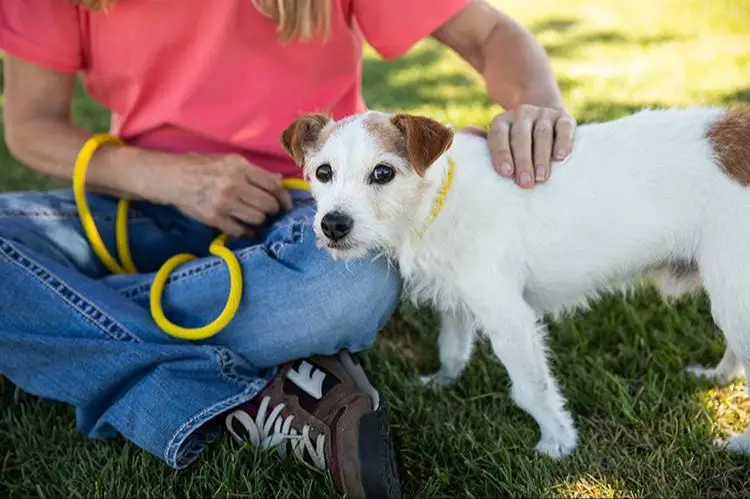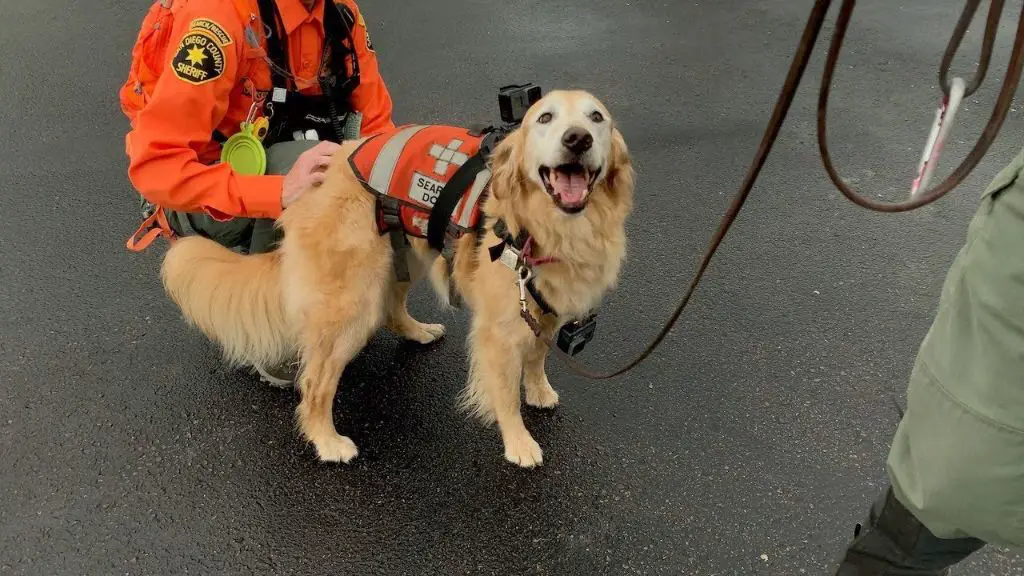Saving a Life in Need
Over 3.3 million dogs enter animal shelters in the U.S. every year. While around 85% of these dogs find homes either through adoption or being returned to their owners, that still leaves nearly 500,000 dogs that will not make it out of the shelter alive each year.
For those dogs that are in real danger of being euthanized, rescue provides them with hope for a second chance at life. Rescuing a dog in need takes compassion, patience and commitment. But for both the rescued dog and its new human, the rewards of that bond are immeasurable.
Why Dogs Need Rescuing
Dogs end up in shelters or as strays for a variety of heartbreaking reasons. Two of the biggest contributors to homeless animals are overpopulation and abandonment.
Overpopulation continues to be a major issue. Unspayed or unneutered dogs can produce multiple litters per year, resulting in more puppies than there are homes for. These puppies often end up in already crowded shelters.
Abandonment also leads to many dogs in need of rescue. Owners may dump dogs because of behavior issues, the burden of care, or a change in life circumstances. Dogs left to fend for themselves face grave dangers such as starvation, disease, extreme weather, and collisions with vehicles.
The end result is millions of healthy, loving dogs euthanized in shelters every year simply because there aren’t enough adopters. Rescuing gives these dogs a second chance at life in a safe and caring home.

Assessing a Dog’s Needs
When rescuing a dog, it’s important to fully assess their needs across several key areas. This will help determine what type of care, training, and support they will require from you as their new owner.
Look at the dog’s health to identify any medical issues or injuries requiring veterinary treatment. Signs can include limping, skin conditions, dental problems, or parasites. Check for heartworm, fleas/ticks, and get vaccines updated. Confirm the dog is spayed/neutered.
Assess their behavior and temperament. Look for signs of fear, anxiety, aggression, or trust issues. Determine if they are socialized to people, other dogs, and comfortable in different environments. Watch body language and reactions. This will indicate training needs.
Consider their age and expected lifespan. Puppies require lots of training and supervision, while seniors may have medical needs or difficulty adapting to change. Try to gauge activity level to match your lifestyle.
Research the breed traits and tendencies. Some dogs need more exercise while others do better with less. Guarding breeds may need socialization. Shedding, grooming and size requirements vary too.
Each dog is unique, so take the time to fully understand who they are and what they need to thrive. This will allow you to provide the best rescue and forever home.

Providing Medical Care
When you rescue a dog, one of the most important things is providing proper medical care. This starts with an initial vet visit to assess the dog’s overall health. The vet will check for any pressing medical issues that need treatment, prescribe medications if needed, and recommend a plan for vaccinations.
Core vaccines like rabies, distemper, and parvo are crucial to get your rescue dog up to date on. Work with your vet to determine which other non-core vaccines may be recommended based on your dog’s age, breed, and location. Setting up annual vet visits will help keep your dog current on all their shots.
Be prepared that your rescued dog may need ongoing medical treatment beyond just vaccinations. Make sure you have the budget to cover costs for medications, supplements, specialized diets, or therapies as prescribed by your vet. Your dog may have chronic conditions that require lifelong management such as diabetes, allergies, arthritis, or dental disease.
Providing good medical care helps create a foundation for your rescue dog’s health and wellbeing in their new home. Partner with a trusted vet to give your dog the care they need to live their best life.
Training and Socialization
Rescue dogs often require training and socialization to help them adjust to their new life. Obedience training is a great way to build trust and communication between you and your dog. Start with basic commands like “sit,” “stay,” and “come” and use positive reinforcement techniques. You can enroll in a group class or work one-on-one with a trainer.
Socialization involves exposing your dog to new people, animals, places, sights, and sounds in a gradual, positive way. This teaches them how to interact properly and reduces fear or anxiety. Take them on walks in busy areas, arrange play dates with neighbor dogs, or visit pet-friendly stores. Give praise and treats when they remain calm.
Some rescue dogs come with problematic behaviors like aggression, destruction, or housetraining issues due to lack of training. Be patient – it can take time to replace bad habits with good ones. Consult a professional trainer or behaviorist if needed. Never use punishment, which will only make problems worse.
With consistent training and socialization, even the most challenging rescue dogs can transform into wonderful pets. The effort is well worth it.

Creating a Safe Home
When bringing a rescue dog into your home, it’s important to create a safe environment by dog-proofing potential hazards. Dogs coming from neglected or abusive situations may be unfamiliar with common household dangers like exposed wires or household cleaners. Do a thorough sweep of the areas your dog will access and put away any toxic materials or cover sharp edges. Secure trash cans and keep medications out of reach. If your dog will have access to a yard, check for spaces in the fence or gate and make sure toxic plants are not accessible.
If you have other pets at home, a slow introduction is key to prevent territory issues. Set up a separate space for your rescue dog at first with their own bed, food/water bowls, and toys. Allow controlled interactions at first through a baby gate. As they become comfortable, allow them to mingle supervised. Make sure each pet has their own defined space for bedtime. With patience and treats, pets can learn to coexist peacefully.
Giving Time and Attention
One of the key things you need to provide for a rescue dog is your time and attention. Dogs are highly social animals that need regular interaction and engagement to thrive. Set aside dedicated time each day to focus on your dog.
Make sure your dog gets adequate exercise every day through walks, playing fetch, or other activities. Exercise meets their physical needs and also provides mental stimulation. Take your dog on at least two brisk 20-30 minute walks per day.
Actively play with your dog as well through games of tug, catch, or hide and seek. Interactive play strengthens your bond and allows your dog to use their natural instincts. Try to engage in at least 15-30 minutes of play time per day.
Work on training your dog through short, positive reinforcement sessions. Even just 5-10 minutes per day of training helps reinforce commands and deepen your relationship. Make training fun rather than a chore.
Spend one-on-one quiet time with your dog each day through cuddling, brushing, or just sitting together calmly. This helps your dog feel safe, secure, and loved.
By giving your rescue dog focused time and attention every day, you’ll build an unbreakable bond while meeting their physical and mental needs.
Being Patient
Rescue dogs often need time to adjust to a new home environment. Many of them come from abusive or neglectful situations, so they may be fearful and untrusting at first. Don’t take this personally – be understanding and give the dog space during this adjustment period. Let them approach you in their own time.
Some rescue dogs may have past trauma that causes challenging behaviors like aggression or destructive tendencies. Overcoming these behaviors takes a lot of patience, consistency and positive reinforcement. Work with a trainer to develop techniques tailored to your dog’s needs. Progress will come slowly, so celebrate small victories.
Keep in mind that setbacks are normal and don’t mean failure. If your dog seems to regress, go back to basics and rebuild that trust. With time, patience and compassion, they can overcome their past.
Lifelong Commitment
When you rescue a dog, you are making a lifelong commitment to care for that animal. This means being prepared for the long-term financial, emotional, and logistical responsibilities of dog ownership.
Financially, dogs can live 10-15 years or even longer. You must budget for expenses like food, supplies, veterinary care, grooming, boarding, pet insurance, and emergencies for the duration of your dog’s life. Rescue dogs may have more health issues that require extra medical costs.
Emotionally, you are responsible for providing your rescue dog with the love, attention, and mental stimulation it needs to lead a happy life. Dogs form strong bonds with their owners, and adjusting to a new home can be difficult. Be prepared to put in time, patience, and dedication to meet your dog’s emotional needs.
Logistically, your lifestyle must accommodate your dog for the long term. Will your living situation allow pets? Can you make arrangements for your dog when traveling? Are you able to provide exercise, enrichment, and care as your and your dog’s needs change over time? Make sure your commitment to your rescue dog aligns with your long-term plans.
While rescue dogs require major commitments, they pay it back with years of unconditional love, loyalty, and companionship.
The Rewards of Rescue
The rewards of rescuing a dog in need are immeasurable. There’s no greater feeling than seeing a once-neglected dog blossom in a happy home. Their unconditional love and loyalty make all the effort worthwhile.

Many rescued dogs go on to live fulfilling lives as beloved family pets. With patience and care, even dogs with troubled pasts can overcome their challenges. Some rescues become service or therapy dogs, giving back to the community.
By adopting from a shelter rather than buying from a breeder or pet store, you save a life and reduce overpopulation. An adopted dog will reward you every day with joy and companionship. Witnessing their transformation as they learn to trust again renews one’s faith in the goodness of people.
There’s a perfect rescue dog waiting for you. Opening your heart and home to a dog in need just might change your life as much as theirs. The devotion of a rescued dog is unmatched. Their eyes, full of gratitude, say it all: thank you for my second chance.